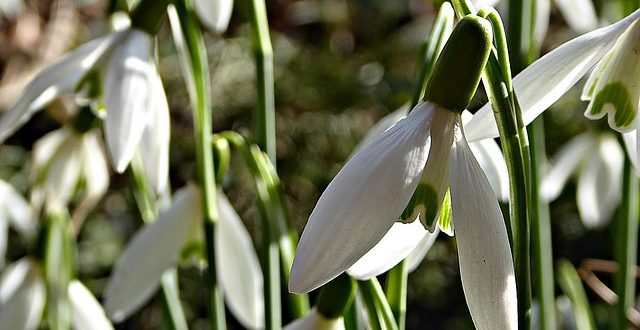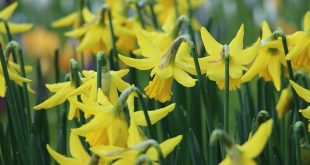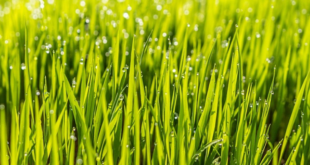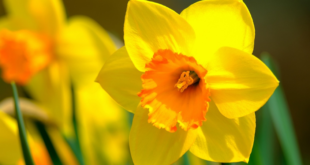February is here, the days are getting longer; Spring will soon be with us. Take advantage of any good days and get outside. There are plenty of jobs to do; here is our Garden Shed Guide.
Trees and Shrubs
Wisteria is the immediate one that comes to mind – the short stems reduced in the latter part of last year will now need to cut to about three or four buds to encourage the flower buds.
This is also an ideal time to prune apple and pear trees. Prune and spray smaller older trees. For larger trees, you may need professional help. Older trees tend to produce many small apples, which invariably attract every disease that is going. First, remove all the growth made during the season, followed by any diseased or crossing branches. When completed, look at removing some of the fruiting spurs to reduce the cropping to have fewer better quality apples instead.
On younger trees, reduce new growth back to two or three buds to develop the fruiting buds for next year. Year one new growth, year two fruiting spurs form, then year three flowers and cropping on fruiting spurs if you are lucky. Treat Pears exactly the same way.
Prune evergreen shrubs as much as possible to reduce the risk of water loss through the existing leaves (transpiration) when they start back into growth.
Taller shrubs may need support with stakes or guy ropes. Trees, regardless of size, need a good solid stake for at least a year, maybe two, together with a proper tree strap. High winds are frequent at this time of year, so it is wise to check all existing stakes and ties together with fences, arches etc. If they need attention, best now than at the height of the season when you cannot see anything for new growth.
Clematis
Only prune Clematis when you can see some signs of life. Pruning now if it is in a sheltered position. Take those that require hard pruning to about a foot from the ground. Lightly prune others for shape if necessary. Leave the Montana as they will be flowering in the next month or so – when it’s finished you can be as carefree (brutal!) as you want.
Snowdrops
When Snowdrops are in full leaf and flower it is the ideal time to lift and move if required. Ordinarily, with most plants you would wait, not so in this case. Dig a hole for the new clump first, lift as much as possible of the existing clump and place into the new hole, finish off by lightly firming the surrounding soil. The leaves will droop to start with, but will pick up again very shortly.
Moving Plants
There is still time to move plants around the garden, but try and get it all finished by the end of this month. Remember, as with all transplants, preparation can be the difference between success and failure. When moving, retain as much of the existing root-ball as possible. Dig the receiving hole first and mix the soil that comes out with a handful of either bone meal or blood fish. The plant has to develop not only new anchor roots but also feeding roots to ensure rapid establishment.
Borders
Herbaceous plants need as much winter light as possible into their crowns, so continue clearing out all the previous year’s growth. A generous helping of organic matter in between all the plants will help to put back some of the food taken out during the year. It may appear to be too early to worry about slugs, but the little perishers are still active so whichever method you find works to control them, increase it!
Lawns
Keep off the lawn if frosty. A high cut will tidy them up if they have become a bit shaggy over the winter. Apply moss killer to keep moss at bay. Consider servicing your mower after you first cut. At this time of year you may get a discount.
Planting Spuds
If you’re thinking of planting seed spuds this year, now is the time to get them out into trays to be chitted. If you have early varieties, lay them in trays in a cool frost-free place and wait for them to sprout from the eyes. Only allow three or four shoots per potato – rub off the others. Maincrop varieties don’t normally need to be started this way, as their growing season is a lot longer. If you have space and want some very early potatoes, place 2 or 3 in a deep pot (about 12″ diameter) filled with a 50/50 mix of John-Innes 3 and a soil-less compost, then stand in the greenhouse. Keep only lightly moist until the shoots appear above the soil, then increase accordingly. Apply a light liquid feed every 10-14 days.
Valentines Day
Finally, for all you romantics out there, advice on how to prepare those dozens of roses that will be winging their way to your door on Valentine’s day!
After you have pondered over whom they are from, especially if you have more than one bouquet (!), unwrap them and place on the draining board of your sink. Cut all the stems (straight or angled, it doesn’t matter) by a couple of inches and remove any lower leaves. Put them into a deep vase of water with any plant food that came with them. Change the water daily to prolong the flowering and continue thinking of ways to explain to your partner why you have more than one bouquet!
In the event that the tops of the flowers start to wilt, don’t despair they are not cheap roses, just likely to have developed an airlock in the stem preventing them taking up water. Take a jug with a couple of inches of boiling water in, cut a couple of inches off the bottom the roses again and plunge the stems into the boiling water for a few seconds. Remove from the water and immediately wrap the stems in newspaper and then place them into fresh water (still in the newspaper) in a vase or similar. After a couple of hours the flower heads will have straightened up, remove the newspaper and place the roses into a deep vase of fresh water.
 Gardeners Club The Gardeners Club is a free to join online club for everyone with an interest in gardening and gardens.
Gardeners Club The Gardeners Club is a free to join online club for everyone with an interest in gardening and gardens.






